Should we change the name Stone Age to the Wood Age? Fascinating data recently analyzed from an ancient archaeological site suggests that this may be the case. The stone implements that are ubiquitous in the archaeological record have biased our understanding of the hunter-gatherer lifestyles that were followed for hundreds of thousands of years.
Our hominin ancestors found beneficial uses for many of the plants found in their environments, but the evidence is lost in the dust of time, since preservation of organic materials occurs only under rare conditions. From the thousands of early hominin sites that researchers have discovered, only a few have contained wooden artifacts.
A remarkable exception is a collection of ancient artifacts found in an open-pit coal mine in Schöningen, Germany. Beginning in the 1990s, archaeologists have recovered a variety of wooden spears and other wooden implements, together with abundant animal bones, plus stone and bone tools. Recent age dates on the wooden weapons indicates they were crafted ca. 300,000 years ago – making them the oldest discovered collection of worked hunting weapons. No hominin remains have been discovered from the Schöningen Pleistocene layers to date, so those who crafted the wooden tools are uncertain. Neanderthals are likely candidates.
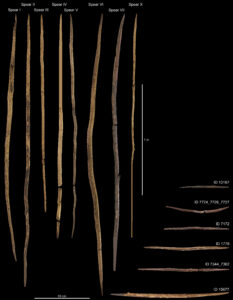
Eight spears and six double-pointed sticks from the Schöningen Lower Paleolithic site, ca. 300,000 years. (Wikimedia)
At the Schöningen site, preservation of the wooden artifacts was in a former lakeshore setting, in stratigraphic layers that transition from organic peat to mudstone. During the distant past, lake level fluctuations covered the artifacts with water, and these anaerobic conditions promoted the exceptional preservation of the items.
The wooden artifacts from Schöningen comprise hundreds of small wood fragments and at least ten spears plus shorter, double-pointed sticks that may have been throwing sticks. These items are in complete or fragmented condition and display splitting, scraping and abrasion techniques. The spears are double-pointed and between a substantial 6 feet and 8.3 feet (184 cm and 253 cm) in length and 1 to 1.8 inches (2.3 cm and 4.7 cm) in maximum diameter. The ancient ones manufactured these weapons from spruce and pine trees—woods that are hard but also flexible. Since these species did not grow in the immediate vicinity of the lake, the wood was likely selected from higher elevation forests, probably several miles from the lakeshore.
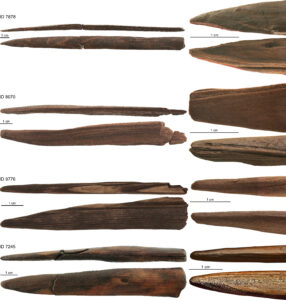
Schöningen spears with examples of pointed split woods and close-up images of the worked points. (Wikimedia)
The butchered animal remains found at the site are primarily from large Pleistocene horses. The cut marks arranged haphazardly on the bones suggest to archaeologists that the hominins worked together to butcher their prey, or that butchering took place over hours or days. These findings imply that the hunters understood the behaviors of different prey species and worked together socially to take down large and fast game—they were the top predators in their ecosystem.
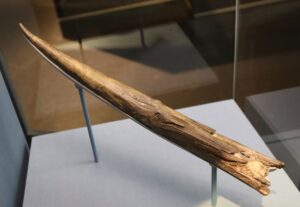
Clacton Spear, ca. 400,000 years, at the Natural History Museum, London. (Wikipedia)
The only wooden implement discovered so far that is older is the Clacton Spear tip, dated to about 400,000 years and found in Essex, England in 1911. The spear fragment is approximately 15.2 inches long and 1.5 inches in diameter, and clearly formed by scraping with a flint (or chert) tool that was also found on the same site.
The awareness of wood properties, the advanced woodworking techniques used, and the probable hunting methods are evidence that early hominins had complex technological skills and social interactions. The findings have helped to transform understanding of our ancient relative’s behaviors and technologies—clearly, those who crafted and used wood tools were far more sophisticated than previously believed.
If you liked this post, please share it and/or leave a comment or question below and I will reply – thanks! And if you’d like to receive a message when I publish a new post, scroll down to the bottom of this page, and leave your email address on my website. Join now to learn more about geology, geography, culture, and history.
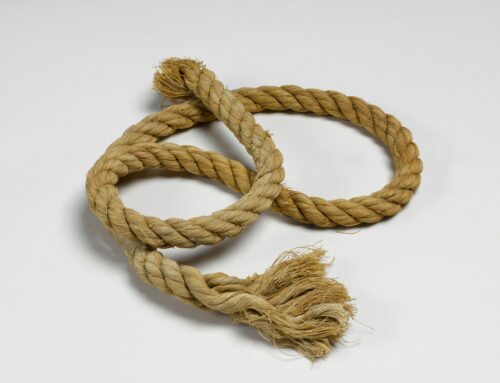
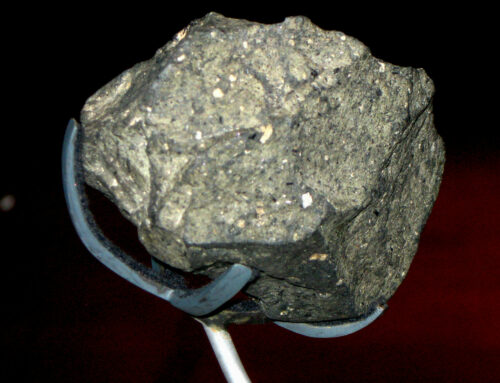
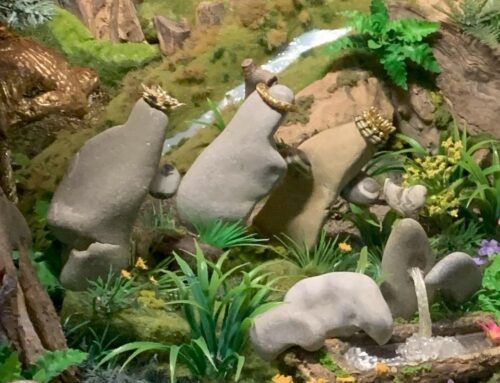

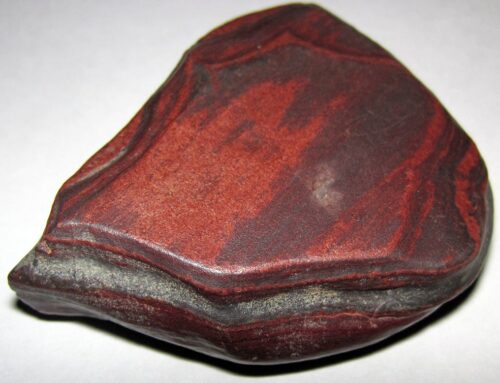

Wood accompanies man from his cradle to his grave…
Yes! Thanks, Leo!
Wow! I had no idea that wood artifacts were this old – great posting!
Yes – impressively ancient artifacts! Thanks, Wayne!